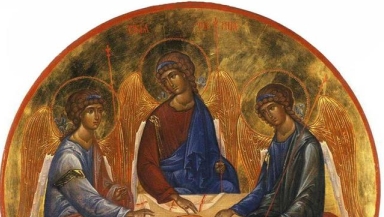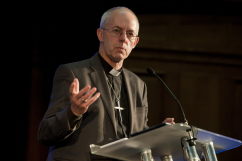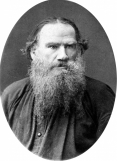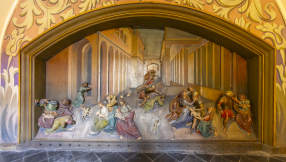
It's like the three stages of water: ice, liquid and vapour.
It's like three parts of an egg: the shell, the white bit and the yolk.
It's like a three leaf clover: one entity, but with three parts.
It's like a man who is a father, son and a husband: one man, three functions.
And my personal favourite – it's like three-in-one shampoo. Not actually sure where to begin with that one.
Do these sound familiar? Flashback to RE lessons at school. I remember my teacher desperately trying to explain the concept of one God but three persons using an alarming range of elaborate analogies that left an already largely apathetic class more bemused than ever. To be fair, it's maddeningly complex, and a concept that few have managed to get their heads around.
Theologian Steve Holmes, who has authored several books on the Trinity, says not even he has it entirely down. Phew. His theological definition is this: "The one eternal God who created all things exists eternally three times over as Father, Son and Spirit, who are inseparably united." Simple, right?
Well, not so much, as the above analogies suggest. God as both three persons and one being with a single, divine nature is a difficult one. It just doesn't add up (sorry). How can anyone, or anything, be three things and one thing all at the same time?
Over the years, Christians have come up with a number of metaphors and images to attempt to explain the Trinity; some more successfully than others. Let's take a look more closely at a couple of those.
The three-leaf clover
This is perhaps the most famous analogy, and one that surely gets cracked out at least once a year in churches up and down the country. The story goes that St Patrick used a shamrock as an illustration for the pagan Irish who were finding it hard to grasp the idea: a shamrock has three leaves, but is one sprig. A perfect illustration, no? Well it would be, except that if we take the three leaves as representative of Father, Son and Holy Spirit, then the analogy fails to recognise that the Godhead is not simply split up into thirds, but each are wholly and completely God in and of themselves and also when they are together.
This approach is known as Partialism (which is also the term for something else which is NSFW.) Historically, it's led Christians to believe that each person of the Trinity is only part God, only becoming fully God when they come together. Wrong.
The one about the water
Confused? How about H<sub>2O in its three forms: ice, liquid and vapour. Surely that's a watertight analogy (sorry, again)? Well this one falls short, too. This approach is known as Modalism – the idea that God merely represents himself in three different forms, but isn't three distinct persons.
Proponents of this way of thinking believe that God first manifested himself as Father, then as Jesus, then as the Holy Spirit. These 'modes' are consecutive, temporary, and never co-exist, thus denying the distinctiveness of the three persons of the Trinity. Wrong again.
The father/son/husband dilemma
Then there's the classic one about a man who is a father, husband and a son all at the same time. He's one man, but has three different functions. Unsurprisingly, this fails to encompass all that the Trinity is, either. The Father, Son and the Holy Spirit aren't simply three functions of God, they are (say it with me now) three distinct persons.
An ordinary man may indeed have a wife, children and a father, but he changes his role depending on whom he is interacting with. It just doesn't compare to the complexities of the Trinity.
---
So what's the point in these illustrations? Should we give up attempting to explain the Trinity and just accept that our language will never be able to fully embody all that God is?
According to Holmes, absolutely not. He says that while no analogy will ever be complete ("I'm slightly resistant to your term 'bad illustrations' because it suggests that some are good"), to give them up completely would be a mistake.
"If the shamrock story is true...then as an opportunistic missional moment, that's fine. But if that's the end of our understanding of the Trinity, then something's gone badly wrong," he explains.
"I think generally the problem is that any image or metaphor we pick up on communicates a certain level of truth, but is also misleading in some ways. The problem comes when we get confused between what is helpful truth being illustrated, and what's actually misleading."
So don't put away those eggs you were saving for your next sermon illustration just yet.
But there's more – Holmes believes that much of the confusion around the Trinity might actually be misplaced. Most people's problem, he says, centres ultimately on the three-in-one issue, "but that's not the big question about God".
"The Trinity is important, but the question of 'threeness-in-oneness' isn't, necessarily...The current best way to explain the Trinity is to reach for the gospel narrative. Point to Jesus speaking to the Father about sending the Holy Spirit," he says.
"The three actors named in the gospel narrative are each truly unquestionably, irreducibly, God. It's not that complicated. But how you make sense of that philosophically, can be."
This makes sense. There is far more to God than the intricacies of the Trinity and, however we choose to look at it or make some sense of the complexities of the Godhead, we're never going to get there. The infinite nature of God and the finite nature of our human minds means we will never completely comprehend his fullness. (I'd present you with an 'it's like trying to fit an ocean in a teacup' illustration here, but that's probably theologically flawed, too). His ways are higher than ours (Isaiah 55:9), and he's capable of far more than we can even imagine (Ephesians 3:20).
As Augustine said, "What you understand can't possibly be God".
Follow @CareyLodge on Twitter.


















